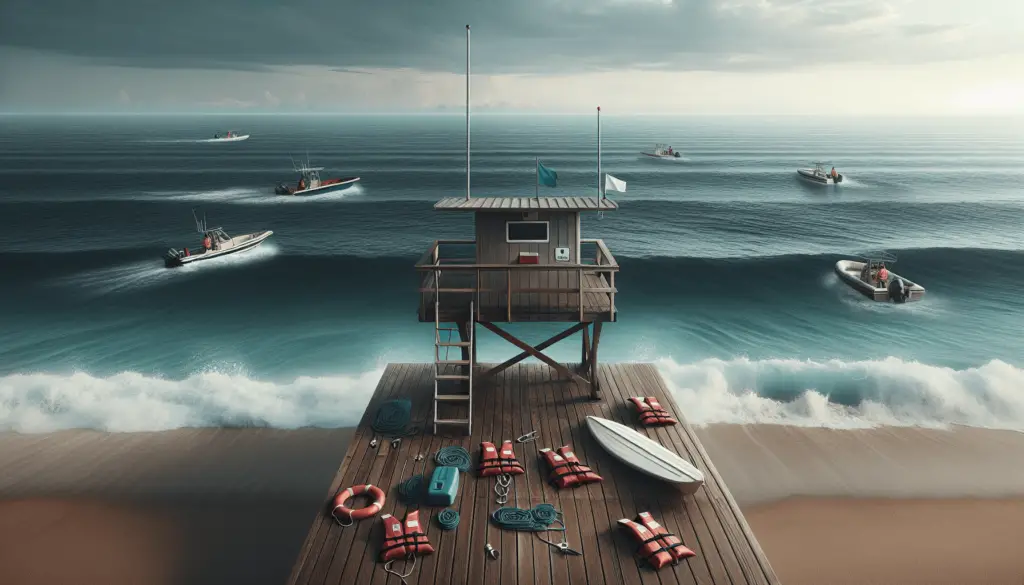Embark on an intriguing voyage with “Most Popular Boating Safety Myths Debunked”, where your acceptance of common boating safety myths is going to be drastically shattered. With every turn of a page, your pre-existing notions of what’s safe and what’s not on the water are going to capsize, replaced by undisputed facts and clear-eyed reality. Glide through the boundaries of misinformation while you gain a new sense of awareness and authority for your next adventure on the unruly waves. So brace yourself, for you are about to take a deep plunge into the waters of truth and revelation.

Myth: Boating under the Influence isn’t as Dangerous as Driving
Unpacking the misconception
If there’s one myth that needs immediate debunking, it’s this one. The belief that operating a watercraft under the influence of alcohol or drugs is less hazardous than driving a vehicle is not just misguided, it’s lethal. Boating may feel more casual, vacation-esque, even idyllic, but remember, when at sea, you’re not only navigating a vessel but also contending with the elements.
Statistics about alcohol and boating accidents
Alcohol is the leading contributing factor in fatal boating accidents, accounting for a significant percentage of all fatalities. Bodies of water can already be unpredictable and dangerous without adding alcohol to the mix. Alcohol impairs your judgement, balance, coordination and can also increase the risk of hypothermia.
Legal consequences of Boating Under the Influence
Every state in the U.S. enforces severe penalties for those found boating under the influence. Similar to drunk driving, the consequences can include fines, imprisonment, suspension or revocation of boat operator privileges, and in some cases, mandatory boating safety classes.
Myth: Life Jackets are Unnecessary for Good Swimmers
Understanding the role of life jackets
Life jackets aren’t about enhancing your swimming capability; they are about survival. Irrespective of a person’s swimming prowess, life jackets offer an additional layer of safety and should always be worn while boating. They also help retain body heat and provide buoyancy, which can be a lifesaver, especially in cold water.
How swimming ability affects survival at sea
Contrary to belief, even an experienced swimmer can struggle in the open water, given the absence of first-grade diving platforms or pool walls. Factors such as fatigue or physical injury can reduce your swimming efficiency, not to mention the unpredictability of underwater currents.
Impact of weather conditions on swimming
Weather conditions at sea are always changing. An unexpectedly strong current or sudden drop in temperatures can render even the most experienced swimmer helpless. Life jackets provide the necessary aid during these difficult times, helping keep you afloat and potentially saving your life.
Myth: Small Boats aren’t Susceptible to Capsizing
Defining boat stability
Boat size is no guarantee of stability. Irrespective of its size, any boat can capsize when imbalanced. Contrarily, with their low center of gravity, smaller boats can sometimes be harder to tip over than larger ones.
Examining causes of boat capsizing
Factors contributing to boat capsizing could range from overloading, poor maintenance, improper distribution of weight to environmental conditions like choppy waters or wind. Remember, every boat has a limit to how many passengers and cargo it can carry safely.
Tips for small boat safety
Always have a capacity plate aboard and make sure not to exceed the listed limits. Distribute weight evenly, and keep yourself and passengers seated at all times, especially when the boat is in motion. Regular maintenance and safety checks ensure that the boat remains in excellent condition, further reducing the chance of capsizing.
Myth: Boat Lights aren’t Vital During Daylight Hours
Functions of boat lights
Boat lights serve two critical functions—visibility and communication. Sure, in broad daylight, sunlight provides adequate visibility, but the communication factor should not be disregarded. Lights signals communicate your presence, direction, and status to other watercraft.
Potential hazards of boating without lights
Operating without lights can cause confusion amongst fellow boaters on an overcast day or in heavy traffic. Misunderstanding signals can lead to potential accidents.
Legal requirements for boat lights
The U.S. Coast Guard requires all boats to be equipped with navigation lights between sunset and sunrise. However, to ensure maximum safety, it’s wise to keep them on at all times, regardless of the daylight.

Myth: Anchor Drops from the Stern
Understanding anchoring principles
While dropping anchor might seem straightforward, one must remember that the method employed is crucial for the boat’s stability. Anchors should always be deployed from the bow, the front part of the boat.
Dangers of anchoring from the stern
Anchoring from the stern, or the back of the boat, can lead to swamping or capsizing. The stern is not designed to bear the load of waves; anchoring from here exposes the boat to even small waves, which can fill up the craft and cause it to sink.
Proper anchoring techniques
Anchoring is a skill that mariners should master. It involves a series of steps that go beyond merely dropping the anchor. Understanding the anchor’s type, the depth of the water, the bottom material, and the forecasted weather are all critical components that contribute to successful anchoring.
Myth: Bigger Boat is Always Safer
Exploring size versus safety
While a larger boat may offer more room and stability, it does not automatically imply that it is safer. Any boat, irrespective of its size, can be safe or unsafe depending on various factors.
Considering boat design and construction
A well-built, well-maintained, and well-equipped smaller boat with an experienced operator at the helm can easily outperform a larger, poorly maintained boat manned by an inexperienced or careless operator.
Examining maintenance and safety equipment
Safety also has much to do with regular maintenance and the availability of necessary safety equipment. Fire extinguishers, life jackets, flares, radio communication devices, first aid kits, and life rafts are essential irrespective of the boat’s size.
Myth: Seasickness can’t be Prevented
Understanding seasickness
Seasickness is a form of motion sickness and is caused by a conflict between visual input and the inner ear’s sense of balance and stability. It’s a common condition but can be managed effectively.
Effective methods for preventing seasickness
Seasickness can be prevented or minimized by staying hydrated, avoiding greasy foods, focusing on the horizon, and limiting alcohol intake. Over-the-counter medication or prescribed drugs can also prove effective if taken well in advance of your boating trip.
When to seek medical attention for seasickness
Severe seasickness can lead to dehydration and should be treated promptly. If symptoms persist or become severe, seek immediate medical attention.
Myth: Radio Distress Signals are Enough for Rescue
Looking at various boat communication systems
Communications systems in boating have evolved beyond mere distress signals. Radios, satellite phones, personal locator beacons are all essential devices for maintaining contact and ensuring rescue in emergencies.
Examining instances where radio signals fail
Dependency on radio signals alone can be perilous, as they may not always be picked up in time, or worse still, fail altogether due to technical issues, range limitations, or battery life.
The importance of having a comprehensive safety plan
A well-rounded safety plan should always include multiple communication systems for use in emergencies. This maximizes the chance of being located and rescued as quickly as possible in the event of an emergency.
Myth: Clear Weather Indicates Safe Waters
Understanding the unpredictability of marine weather
Marine weather is notorious for its quick turns and unpredictability. Just because the skies look clear and the water calm, it does not necessarily mean that conditions are safe for boating.
The role of weather forecasts in boating
Up-to-date weather reports and forecasts are invaluable tools for boaters. They provide essential information about approaching storms, changing wind patterns, waves, and other weather conditions that could affect the safety of your trip.
How to prepare for sudden weather changes
Preparation is crucial when it comes to weather changes. Always attire appropriately, carry necessary safety equipment, and have a safety plan in place.
Myth: It’s Safe to Boat without a Pre-Departure Checklist
Identifying the purpose of a pre-departure checklist
A boating pre-departure checklist is like your road map to safety. It outlines the items and safety procedures to review before launching your boat.
The consequences of neglecting a pre-departure checklist
Skipping a pre-departure checklist can lead to serious consequences, including boat equipment failures, accidents, fines, and in extreme cases, loss of life.
Components of an effective pre-departure checklist
A useful pre-departure checklist includes sections on documentation, equipment checks, and emergency preparations. It should include items like life jackets, emergency flares, fire extinguishers, a sufficient fuel supply, functioning lights, and communication devices, to name a few.
Remember to stay safe, stay prepared, and be open to learning and debunking the myths that surround boating safety.

